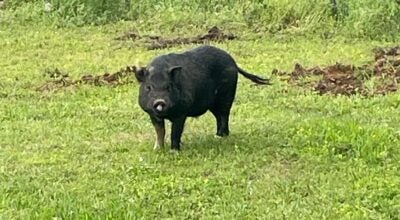Oxford’s trees are in good health overall
Published 6:00 am Sunday, December 17, 2017
Trees not only add to Oxford’s beauty but also provides more than $300,000 of benefits to the community, according to a recently completed tree survey.
This summer, the city, on a recommendation from the Oxford Tree Board, commissioned an inventory and assessment of trees and stumps located within the public rights-of-way, as well as in two city parks and the Oxford Memorial Cemetery.
The hired Davey Resource Group, a division of the Davey Tree Expert Company out of Kentucky, to inventory the trees and include them into the city’s GPS mapping system.
Davey Resource Group collected and analyzed the inventory data to understand species composition and tree condition and to generate maintenance recommendations. Tree values and benefits have been quantified using the i-Tree Streets benefits model – developed by the United States Department of Agriculture Forest Service in partnership with the Davey Tree Expert Company, according to the report.
The report studied 6,992 trees and 114 stumps.
Key findings from the report show that the overall condition of Oxford’s city-owned tree population is good.
Oxford’s city-owned tree population is good.
Several factors were considered for the condition of each tree, including root characteristics, branch structure, trunk, canopy, foliage condition and the presence of pests. The condition of each inventoried tree was rated Excellent, Very Good, Good, Fair, Poor, Critical, or Dead. Of the inventoried trees, 79 percent were recorded to be in Good condition. About 15 percent were in fair condition.
The most common species are crape myrtles, loblolly pine, eastern red cedar, willow oak and slash pine. Crape myrtles are the most common, making up 23 percent of the population.
Other findings
Other findings include that 63 percent of the urban forest is in the young category, 0 to 8 inches in diameter. Approximately 83 percent of the tree population is recommended for cleaning – removing dead, detached, diseased, infested and damaged branches, 12 percent are recommended for a young tree training prune and 5 percent are recommended for removal.
Oxford’s tree population provides approximately $318,570 in annual benefits including $158,800 a year for aesthetic and other tangible benefits; air quality, valued at $15,840 per year; net total carbon sequestered and avoided at 607 tons valued at $8,740 a year; providing energy with 334 megawatt-hours and 11,700 therms valued at $37,630 a year and providing stormwater control for 9,852,900 gallons of runoff water valued at $97,540 a year.
The study was paid for by a grant the Oxford Tree Board received earlier this year and from the city’s Tree Mitigation Fund, which comes from developers who pay into the fund when they cannot mitigate the same number of trees removed from a construction site on the same property.
“We’ve been trying for a long time to get an inventory done,” Tree Board member Cowan Hunter said in July. “This will help us in a lot of different ways in terms of managing the trees on public property, knowing where we might need to plant more trees and where we may need to remove some.”
The complete tree survey can be read online at www.oxfordms.net.





